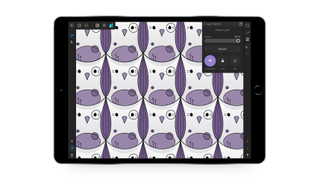

So, going forward, I’ll be moving my current Affinity Photo files over to this local iPad storage and will save all new files there. The Affinity Photo folder is very easy to spot thanks to the icon. From the Files app I can now see the file size and easily share the file via the share sheet or via drag and drop from the Files app to any location or to email as an attachment or Messages or whatever. After that I can open it up from the Files app using the “On my iPad” location in the side bar. The file is then saved into “On my iPad” in the “Photo” folder on iPad.

To save my Affinity Project files to this Files accessible storage area I access the corner widget of the document icon in the built-in document browser and chose “Save”. But given the bandwidth Iimits I have (rural satellite) I chose “On my iPad”. If I had better internet I would have gone with iCloud. How do I move these over to the Files app and what are the options? There are two options for storage in the Settings, general tab: iCloud or “On my iPad”. It’s not possible to see file sizes from this location. A sort of hidden storage area which only shows up in the documents browser within Affinity Photo. I’d previously tinkered with it but it seemed a bit confusing.īy default files are stored within the Affinity Photo built in storage system on the iPad. So, I decided it was time to have a serious look at how Affinity Photo uses the Files app. File management is the only part of the app that I found average. But if I’ve got 150 files in 12 folders you can see how cumbersome this can be. That’s not a problem if I’ve just got 10 files.

There’s no way to tag or search files either. Now, I’ve got plenty of storage on my iPad but I don’t like the feeling that if I want to move or copy my files I have to do it one file at a time. Using the Affinity Photo file browser to browse a folder containing 4 files Another limitation is that if I want to back-up a bunch of files, copy or move them I have to do it one at a time via the “Save as” option. But using the apps built in method for file interaction provides no indication of file sizes so really, it’s all just guessing. By chance I was poking around the iPad Settings app and took a look at my iPad’s storage and saw that Affinity Photo was using up 22GB! I’ve got quite a few projects but expected it to be half of that. I’ve mostly been ignoring those limitations until today. This is great because while the app has a decent built-in interface for managing files and folders that interface does have limitations. With the first update of 2018, version 1.6.7 the developers added the ability to open and save files in place. I’ve been using it for client projects literally since the day it was released in June 2017. It is the most used app on my iPad and always a pleasure to use. To say that I am an enthusiastic user of Affinity Photo would be an under statement.


 0 kommentar(er)
0 kommentar(er)
